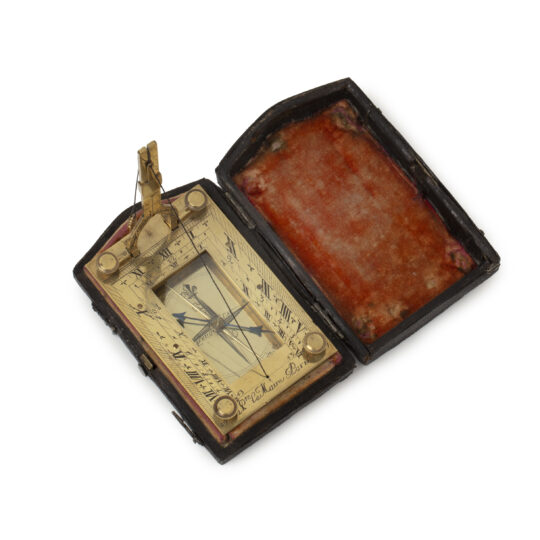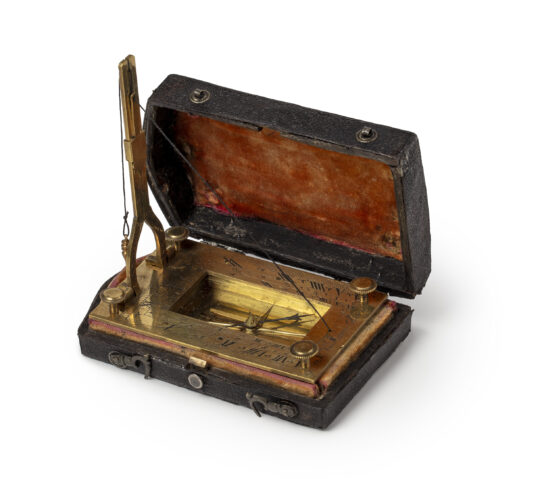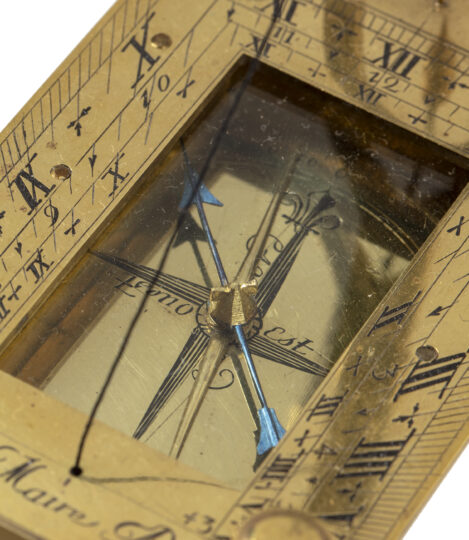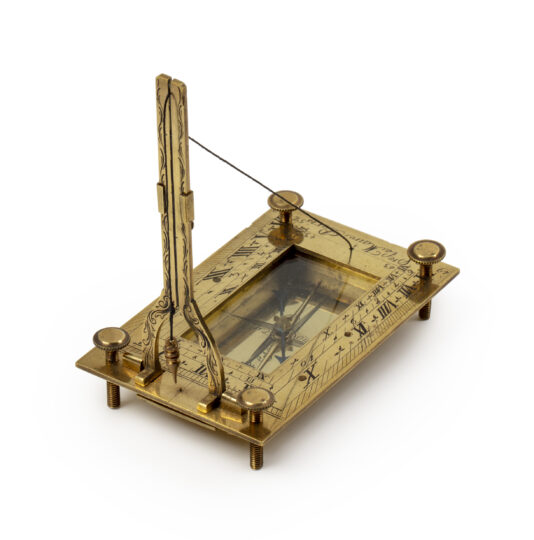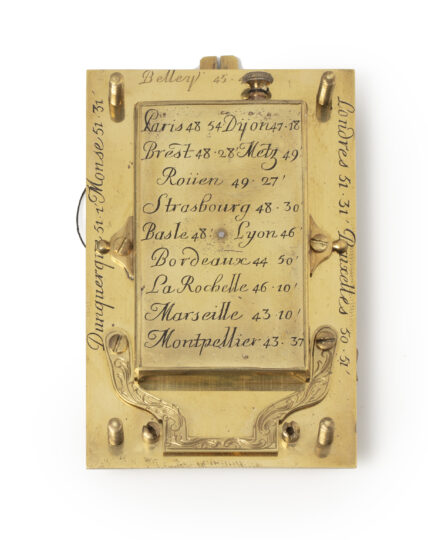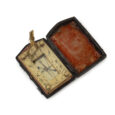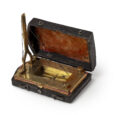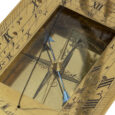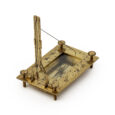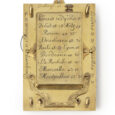RARE POCKET SUNDIAL WITH CASE Pre LeMaire AParis Ca. 1750 France
M&R243a
RARE POCKET SUNDIAL WITH CASE
Signed: Pre LeMaire AParis
Circa 1750
France
A French rectangular horizontal brass sundial with compass. The brass register plate is divided into Roman numerals with half-hour and five-minute divisions. The instrument has an adjustable gnomon in the form of a thread, made for a latitude of 40 to 55 degrees. This wire can be set in a vertical construction to the appropriate latitude. In the centre there is a recessed and glazed compass with the cardinal directions: Ouest and Est. North is indicated with an engraved lily motif. To position the sundial properly, four adjustable feet are attached to the bottom and the instrument has a plumb line, which forms part of the gnomon wire. The latitudes of 16 cities are engraved on the back of the instrument. The compass also has a special brass hand to establish the magnetic declination.
The maker signed the instrument on the top as follows: Pre LeMaire AParis.
When travelling, the pocket sundial can be put in the corresponding case, lined with velvet on the inside and black leather on the outside.
Dimensions: 9 x 6 cm.
Case dimensions: 10.5 x 7 cm.
Literature
-Tardy, Dictionnaire des Horlogers Français, Paris, 1970, p. 103.
-Brian Loomes, Watchmakers and Clockmakers of the World, London, 2010, p. 126.
Similar item in:
Tijd voor klokken, verhalen rond een verzameling, Walburg Press, pp. 74 and 75.
The maker
Two Pierre Lemaires are mentioned who made sundials – the eldest lived from 1672-1745, and his son of the same name was active from about 1730-1760.
Sundials were a fashionable and functional travel accessory at the end of the 17th and at the beginning of the 18th centuries. Similar examples can be found in the National Maritime Museum in Greenwich, the V&A and the British Museum.

